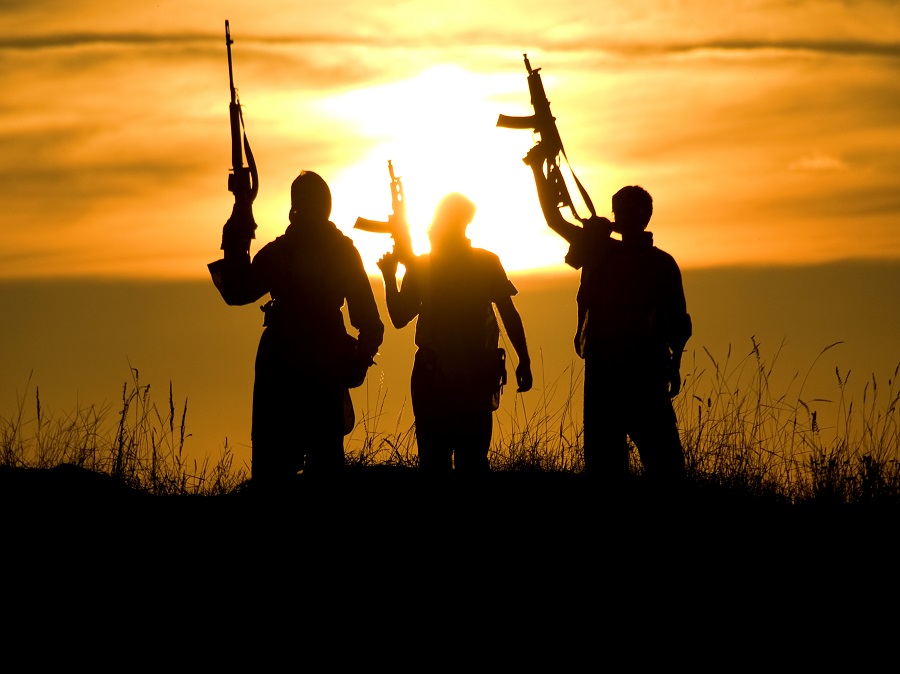
My latest Strategic Insights paper provides an overview of the post-caliphate Salafi-jihadi environment, focusing on the franchising strategy of al-Qaeda and Islamic State. It finds that the threat is now less ‘top-down’ than ‘bottom-up’ and provides three sets of recommendations on how Australia should adjust its counterterrorism strategy in the face of a changing environment.
To understand the current Salafi-jihadi environment we need to acknowledge that despite years of combat and engagement with violent extremists there are over 60 Salafi-jihadi groups around the world, the same number as in 2016 and three times as many as there were in 2001. In 2018, estimates of the number of Salafi-jihadis and allied fighters around the world ranged as high as 230,000.
I suspect that these numbers are likely to increase because al-Qaeda will continue with its franchising policy and IS is likely to develop its own franchising strategy as its fighters find new safe havens.
In June, the Islamic State’s Khorasan province, just like the Islamic State’s West Africa province, Islamic State’s Sinai province, Islamic State Caucasus and Islamic State East Asia (Philippines), released a 12-minute video reaffirming its fealty to Abu Bakr al-Baghdadi. These messages are a constant reminder that IS remains engaged with the ‘provinces’, flipping its strategy from establishing a ‘state’ to one in which it tries to control areas from East Asia to West Africa.
The franchising strategy has two key pillars. First, it emphasises that local issues will dominate the transnational Salafi-jihadi agenda for the immediate future. The intention is to promote an overarching ideology, managed by a top-down command-and-control structure while at the same time allowing the franchisees to have more operational freedom.
What al-Qaeda and IS want is an oath of allegiance and a commitment by these local actors to generate widespread insecurity and consequent overreaction by governments in order to attract more followers. This was something that IS attempted to do when it fed on Sunni opposition to the Shia-led Iraqi government of Nouri al-Maliki. The tactic was also used by the Pakistani Taliban and by al-Shabaab in Somalia.
The second pillar of the strategy is to focus on the non-Western world, ideally on Muslim-majority fragile and weak states where there is plenty of opposition to government, which is also why analysts such as former CIA deputy director Michael Morell have come to argue that the ‘Arab Spring was really a spring for al-Qaeda’. Moreover, al-Qaeda and IS recognise that through money and marriage they can cement appropriate ties with local communities in parts of the Muslim world.
The strategy that al-Qaeda and IS are pursuing isn’t new and builds on the ideas of early jihadi theorists such as Abdullah Azzam, Abu Musab al-Suri and Muhammad Abd al-Salam Faraj. Azzam argued for the need to focus resources to ‘free’ Muslim lands first, whereas al-Suri advocated for individual jihad, or lone-actor attacks. Faraj argued that jihad forms the sixth pillar of Islam (there are only five pillars: the profession of faith; prayer; the giving of alms; fasting during Ramadan; and making pilgrimage to Mecca).
Al-Qaeda and IS recognise that taking their jihad to the West has been counterproductive as they can’t compete with the firepower or resources that the West can devote. However, they can establish safe havens in fragile and weak states from which they can undermine local, regional and international peace and security while continuing to disseminate their global ideology.
The implications of this new strategic focus are threefold. First, we must recognise that the counterterrorism regime that we have crafted so carefully over the last decade is out of step with the new Salafi-jihadi architecture. We are likely to see more activity in places like the southern Philippines, Tajikistan, the Sahel and southern and western Africa, as opposed to attacks in Europe, the US or Australia. Consequently, our counterterrorism approach must be outward looking and aimed at addressing local conditions that Salafi-jihadis exploit, and include a more robust discussion about foreign aid.
Second, al-Qaeda and IS are likely to double their investment in the online space. Whereas in the past they utilised mainstream platforms including YouTube, Twitter and Facebook, actions by states and the Global Internet Forum to Counter Terrorism to disrupt and remove violent extremist content have driven them away. They are now moving towards more niche platforms such as GoLike, Baaz, Viber, Kik, Ask.fm and Discord.
They are also experimenting with developing their own messaging systems. The Amaq News Agency, which is one of IS’s media platforms, has provided guidance on how the ‘faithful’ can protect against distributed denial-of-service attacks, engage in end-to-end encryption, and use services like Cloudflare. They have also shown themselves to be attuned to new developments in software and hardware, as seen in 2018 with their use of Rocket.Chat, an open-source messaging application designed for businesses. IS even published a technical manual on how to use it.
We now need to assess whether our approach of blocking or demanding the removal of content is cost-effective and useful. There is some evidence to suggest that such actions may actually help violent extremists. Put simply, our digital counterterrorism strategy must change.
It is increasingly likely that there will be more lone-actor attacks by homegrown radicals with no background in fighting or formal ties to either organisation. This is because al-Qaeda and IS will focus more on inspiring and inciting attacks, and target more vulnerable recruits, including people with mental health issues, through tailored, as opposed to off-the-shelf, recruitment strategies.
The ancient Chinese strategist Sun Tzu noted that military tactics are like water in that they are shaped by topography. As the environment changes so should the tactics. Al-Qaeda and IS are doing this; the question is, can we?

